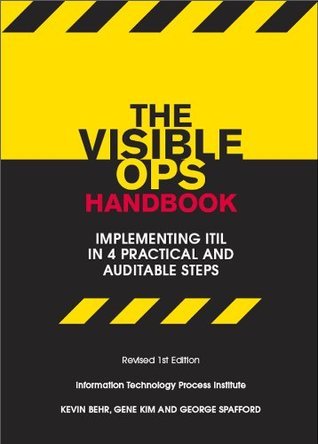What do you think?
Rate this book


MAKING ITIL ACTIONABLE
Although the Information Technology Infrastructure Library (ITIL) provides a wealth of best practices, it lacks prescriptive guidance: What do you implement first, and how do you do it? Moreover, the ITIL books remain relatively expensive to distribute. Other information, publicly available from a variety of sources, is too general and vague to effectively aid organizations that need to start or enhance process improvement efforts. The Visible Ops booklet provides a prescriptive roadmap for organizations beginning or continuing their IT process improvement journey.
WHY DO WE NEED VISIBLE OPS?
The Visible Ops methodology was developed because there was not a satisfactory answer to the question: "I believe in the need for IT process improvement, but where do I start?" Since 2000, Gene Kim and Kevin Behr have met with hundreds of IT organizations and identified eight high-performing IT organizations with the highest service levels, best security, and best efficiencies.
For years, they studied these high-performing organizations to figure out the secrets to their success. Visible Ops codifies how these organizations achieved their transformation from good to great, showing how interested organizations can replicate the key processes of these high-performing organizations in just four steps:
1. Stabilize Patient, Modify First Response - Almost 80% of outages are self-inflicted. The first step is to control risky changes and reduce MTTR by addressing how changes are managed and how problems are resolved.
2. Catch and Release, Find Fragile Artifacts - Often, infrastructure exists that cannot be repeatedly replicated. In this step, we inventory assets, configurations and services, to identify those with the lowest change success rates, highest MTTR and highest business downtime costs.
3. Establish Repeatable Build Library - The highest return on investment is implementing effective release management processes. This step creates repeatable builds for the most critical assets and services, to make it "cheaper to rebuild than to repair."
4. Enable Continuous Improvement - The previous steps have progressively built a closed-loop between the Release, Control and Resolution processes. This step implements metrics to allow continuous improvement of all of these process areas, to best ensure that business objectives are met.
112 pages, Kindle Edition
First published January 1, 2004